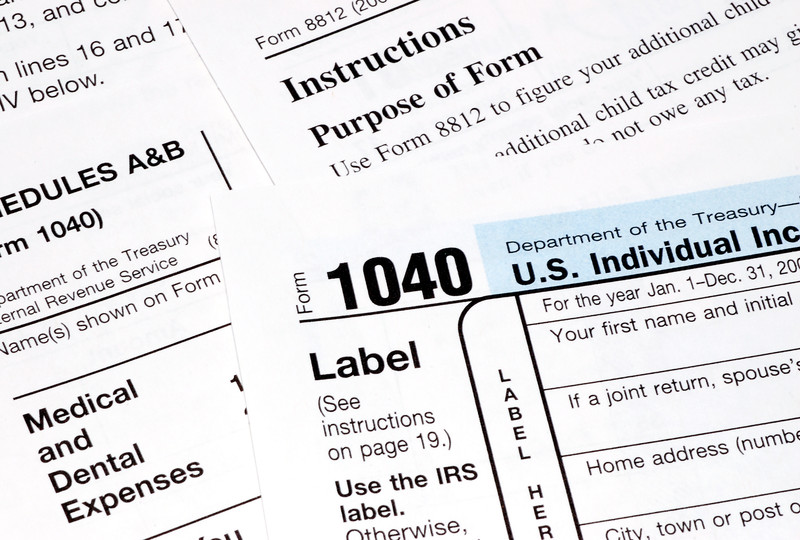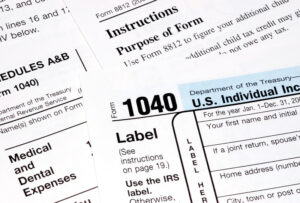The United States has a progressive tax system, meaning that the more you make, the higher percentage of your income will be taxed.
As of 2020, there are seven tax brackets: 10%, 12%, 22%, 24%, 32%, 35% and 37%. Depending on how you file, there are different income thresholds for each percentage.
Tax Brackets for Single Filers
If you are not married and do not have any dependents, you would fall into the tax brackets of a single filer. Brackets of a single filer in 2020 look like this:
- 10% Tax Rate – $0 to $9,875
- 12% Tax Rate – $9,876 to $40,125
- 22% Tax Rate – $40,126 to $85,525
- 24% Tax Rate – $85,526 to $163,300
- 32% Tax Rate – $163,301 to $207,350
- 35% Tax Rate – $207,351 to $518,400
- 37% Tax Rate – More than $518,400
However, taxation is not as intuitive as it looks. Most taxpayers need to look at multiple tax brackets in order to understand how much they owe.
Let’s look at the example of someone who made $100,000 in 2019. They fall into four tax brackets: 10%, 12%, 22% and 24%. On the first $9,875 they made, they’d be taxed at a rate of 10%. Then, on the money they made from $9,876 to $40,125 (a total of $30,249) they’d be taxed at a rate of 12%. On the money from $40,126 to $85,525 (a total of $45,399), they’d be taxed at a rate of 22%. The remainder of the $100,000, which is $14,475, would be taxed at 24%.
The final calculation would look like this:
- $9,875 x 10% = $987.5
- $30,249 x 12% = $3,629.88
- $45,399 x 22% = $9,987.78
- $14,475 x 24% = $3,474
- $987.5 + $3,629.88 + $9,987.78 + $3,474 = $18,079.16
Without any deductions, someone who made $100,000 would owe about $18,079.16 in federal taxes. The tax situation for each state would look different.
Tax Brackets for Married Filing Jointly
If you are married, you can combine your income with your partner, which will also raise the thresholds of your tax brackets. This is a viable option for most married couples, especially in relationships where one person makes significantly more than the other, as it can keep filers in lower tax brackets.
Here is what the brackets look like when filing jointly:
- 10% Tax Rate – $0 to $19,400
- 12% Tax Rate – $19,401 to $78,950
- 22% Tax Rate – $78,951 to $168,400
- 24% Tax Rate – $168,401 to $321,450
- 32% Tax Rate – $321,451 to $408,200
- 35% Tax Rate – $408,201 to $612,350
- 37% Tax Rate – More than $612,351
Like filing single, couples usually fall into multiple tax brackets. For a couple whose combined income is $100,000, they’d be taxed at a rate of 10% for the first $19,400 earned, then at 12% on the money earned from $19,400 to $78,950 ($59,550), and then at 22% for the remaining $21,050 earned.
The calculation would look like this:
- $19,400 x 10% = $1,940
- $59,550 x 12% = $7,146
- $21,050 x 22% = $4,631
- $1,940 + $7,146 + $4,631 = $13,717
Without any deductions, a married couple would be paying $13,717 in taxes. This is over $4,000 less than the single filer who made $100,000.
Married couples do have the option of filing separately, where they are subjected to similar tax brackets as single filers.
Head of Household Tax Brackets
Filing as head of household can offer more lenient tax brackets compared to filing single. However, there are a few requirements to consider as the head of household:
- You must pay for more than half the household expenses
- You have a dependent
- You are not married
Here’s what tax brackets look like when filing as head of household:
- 10% Tax Rate – $0 to $14,100
- 12% Tax Rate – $14,101 to $53,700
- 22% Tax Rate – $53,701 to $85,500
- 24% Tax Rate – $85,501 to $163,300
- 32% Tax Rate – $163,301 to $207,350
- 35% Tax Rate – $207,351 to $518,400
- 37% Tax Rate – More than $518,401
If you qualify for head of household, it could save you thousands when compared to filing single.
Tax Deductions
Tax deductions are great ways to stay within lower tax brackets. Any tax deduction you have will reduce your taxable income.
The most common deduction that everybody is eligible for is the standard deduction, which is a fixed amount that gets subtracted from your income. The amount varies depending on how you file:
- Filing Single: $12,200
- Married Filing Jointly: $24,400
- Filing Head of Household: $18,350
If a single filer who made $100,000 factors in the standard deduction, they will only be taxed on $87,800 of their income. The nice thing about standard deductions is that it comes off the top, meaning that for the last $12,200, he or she would have paid 22% in taxes. In this example, the standard deduction saved the single filer $2,684 in taxes.
In the event that a filer has large expenses related to his or her job, the filer can opt to itemize deductions. This would require a thorough breakdown of every expense added up. However, most do not take this route, as this would waive the filer’s right to use the standard deduction. Most single filers do not spend more than $12,200 a year on their job.
Tax Credits
While tax deductions reduce the amount of taxable income, tax credits reduce your payment after your taxes owed have been calculated. Tax credits do not affect your tax bracket. However, if you owe $5,000 in taxes after all the calculations have been done, tax credits may be able to reduce that amount.
There are many ways to get tax credits. Some are eligible for tax credits based on child adoption, healthcare bills, solar panels, and education, among many others.
We hope this article helped clear up some common misconceptions about tax calculations. Understanding taxes is a key step to building successful and sustainable financial wellness.








